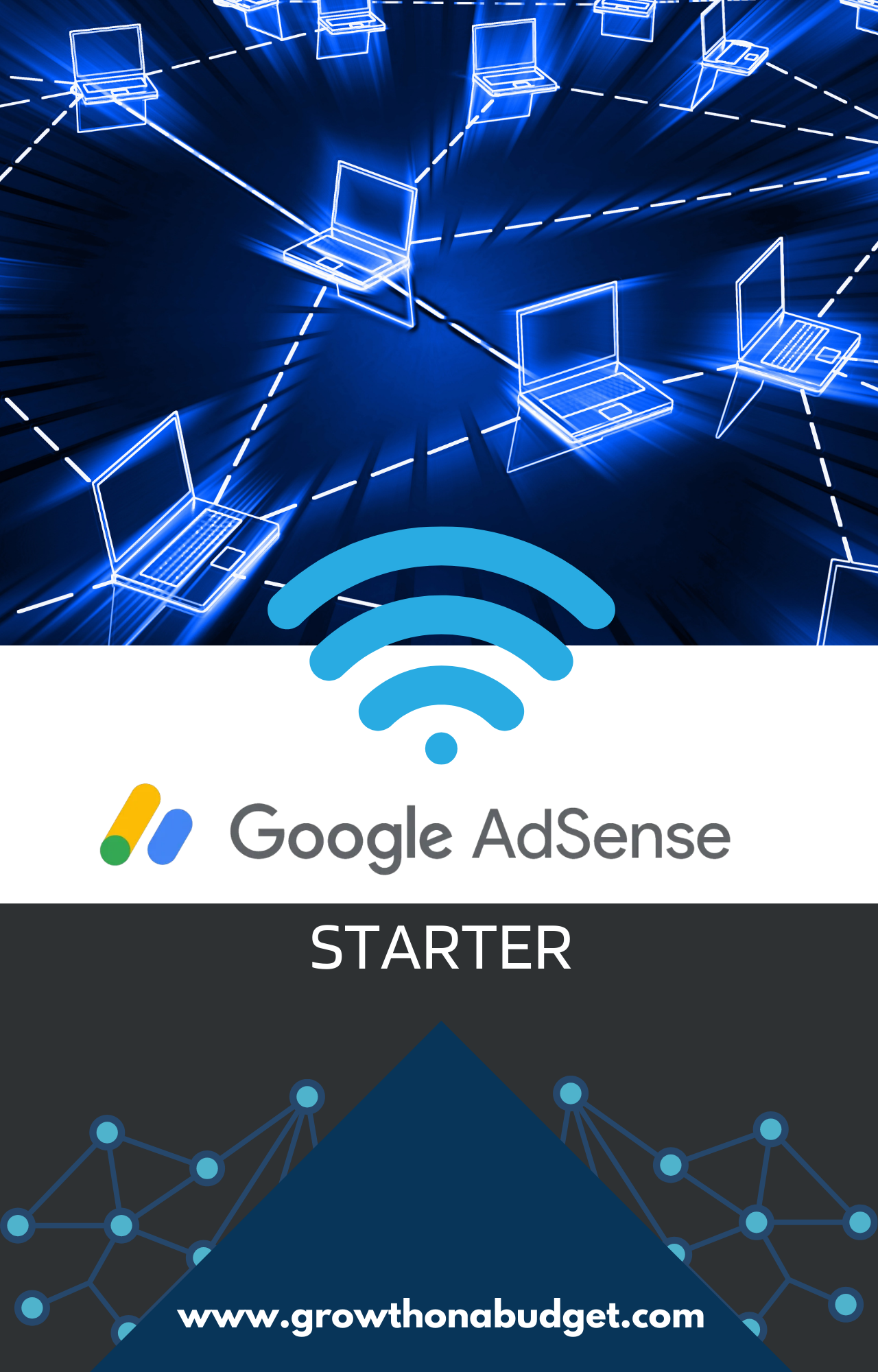Welcome, aspiring bloggers! If you’re eager to start a blog and earn income, you’ve found the right spot. This guide will walk you through the potential of making money blogging in your first month. Whether you’re passionate about a particular topic or have a niche in mind, starting is easier than ever.
We’ll discuss the key steps to begin monetizing your blog, from selecting a profitable niche to setting up the technical aspects. With realistic expectations and practical tips, you’ll be on your way to a blog that generates income.
Are you ready to start blogging for income? Let’s dive into this exciting venture and see how you can quickly and efficiently earn your first dollars!
Choosing the Right Niche for Your Blog
Selecting the right niche is crucial for your blog’s success. It’s vital to match your interests with market demand. This ensures sustainable content creation and connects you with your targeted blog audience.
A successful niche selection strategy involves evaluating several key factors:
- Search Volume – Use tools like Google Trends and Ahrefs to check keyword search volumes. This helps identify topics your audience is interested in.
- Competition Analysis – Assess the competition. High competition can be tough, while low competition might mean less interest. Finding a balance is crucial.
- Audience Engagement – Pick niches with active communities on platforms like Facebook and Reddit. Active engagement often leads to more blog traffic.
Reports show that personal finance, health and wellness, and tech reviews are among the most profitable niches. Personal finance blogs attract readers eager to learn about financial literacy and wealth-building. Health and wellness blogs draw a wide audience interested in improving their lifestyles.
“Choosing a niche connected to your passion while still ensuring its profitability sets you up for long-term blogging success.”

Let’s look at the profitability and engagement of some popular niches:
| Blog Niche | Profitability | Audience Engagement |
|---|---|---|
| Personal Finance | High | High |
| Health and Wellness | High | High |
| Tech Reviews | Moderate | Moderate |
Using a strong niche selection strategy boosts your chances of connecting with your targeted blog audience. It leads to significant growth and engagement. A well-chosen niche is the cornerstone of a successful and profitable blog.
Setting Up Your Blog
Starting a blog requires choosing the perfect domain name. This step is crucial as your domain name is your brand’s face and the first thing visitors see. GoDaddy and Namecheap offer a plethora of domain options to find a name that matches your blog’s theme and is memorable.
Then, pick a dependable web hosting service for bloggers. The hosting service affects your blog’s speed, uptime, and performance. Bluehost and SiteGround are top choices for their great prices and superb support. They have various packages for all levels of bloggers, from beginners to pros.
Once you’ve registered your domain and chosen hosting, select a simple yet effective content management system (CMS). WordPress is a top pick for its ease of use, flexibility, and extensive plugin library. You can easily install WordPress via your hosting provider’s dashboard.

| Hosting Service | Price (Monthly) | Features |
|---|---|---|
| Bluehost | $2.95 |
|
| SiteGround | $3.99 |
|
By following these steps in your blog setup guide, from domain registration to selecting web hosting for bloggers, you lay a solid foundation for a successful blog.
Designing Your Blog for Success
Creating a visually appealing and user-friendly blog is key to success. Focus on *user experience* to make your blog stand out. Ensure it’s easy to navigate, looks great, and loads quickly. A responsive blog theme is vital for this. It makes your blog look good on all devices, from desktops to smartphones.
Choosing the right design templates is also crucial for a strong brand identity. Pick templates that match your blog’s niche and your style. Customization options like color schemes, font styles, and layout choices make your blog unique. Remember, simplicity is often better for user experience. Aim for a clean design that keeps readers focused on your content.
Make sure your blog is easy to navigate by organizing your categories and menus logically. Use intuitive labels and a streamlined navigation bar. High-quality visuals, relevant logos, and consistent branding elements strengthen your blog’s identity and improve user experience.

These elements together create a blog that attracts and retains readers. By applying these strategies, you can improve your blog’s look and functionality. This sets the stage for long-term success.
Writing High-Quality Content
Creating high-quality content demands a strategic approach to connect with your audience. Developing a solid content creation strategy is crucial for successful blogs. It’s not just about publishing; it’s about crafting content that keeps readers engaged and reflects your brand.
“Content is king, but engagement is queen, and the lady rules the house.” – Mari Smith
To produce engaging blog posts, begin with thorough topic research. Understand what your audience needs and wants. Utilize tools like Google Trends and BuzzSumo to find trending topics in your niche. Engaging with your audience through polls and questionnaires can also reveal valuable content ideas.
Keeping a content calendar is another key element. It helps organize your ideas and ensures a consistent publishing schedule. This consistency is essential for building and sustaining a loyal reader base. Readers are more likely to return when they know they can rely on regular updates.
Integrating content marketing strategies can expand your blog’s reach. Share your posts on various platforms, collaborate with influencers, and interact with readers. This interaction not only increases engagement but also improves your blog’s reputation.

In conclusion, a well-planned content creation strategy, engaging and well-researched blog posts, and effective content marketing are vital for writing content that captivates and keeps your audience.
Implementing SEO Strategies
Mastering blog SEO best practices is key to boosting your blog’s visibility. Start with comprehensive keyword research. Tools like SEMrush offer insights into search volumes, keyword difficulty, and competitive analysis.

After identifying your keywords, focus on on-page optimization. Place keywords strategically in titles, headers, and content. This helps search engines index your pages accurately.
Also, optimize meta descriptions and alt texts for images to enhance your ranking. Google’s Webmaster Guidelines provide valuable insights on best practices and what to avoid.
Here’s a detailed breakdown of essential SEO elements and their implementation:
| SEO Element | Description | Best Practices |
|---|---|---|
| Keyword Placement | Integrating primary and secondary keywords into key areas of your content. | Include keywords in titles, headers, and the first 100 words of your content. |
| Meta Descriptions | Brief summaries that describe the content of your page. | Limit to 160 characters and include main keywords. |
| Alt Text | Text descriptions for images. | Include keywords where natural; describe the image accurately. |
| Internal Linking | Links that connect your blog posts to each other. | Use descriptive anchor text to enhance navigation and SEO. |
By applying these blog SEO best practices and focusing on both keyword research and on-page optimization, you can significantly improve your blog’s visibility. This will drive more organic traffic to your site.
Promoting Your Blog on Social Media
Mastering social media marketing is key for successful blog promotion. Platforms like Facebook, Twitter, and Instagram can expand your reach and boost your blog’s traffic. Here’s how to use these platforms effectively:
- Facebook: Create a dedicated page for your blog and post engaging content regularly. Use Facebook groups to share your blog with a wider audience.
- Twitter: Use trending hashtags in your niche. Engage with followers by retweeting and answering their questions.
- Instagram: Share visually appealing images that link back to your blog posts. Use stories and IGTV for more engagement.
“Focusing my efforts on Instagram transformed my blog traffic overnight. Consistently sharing vibrant images and engaging stories led to incredible social engagement and a growing audience.”
To boost your social engagement, create content that speaks to your audience. Look at successful bloggers’ social media strategies and adapt them to fit your style. Every detail counts in blog promotion – from catchy headlines to eye-catching graphics.

A useful way to compare different social media platforms and their benefits is through the table below:
| Platform | Key Features | Best Use |
|---|---|---|
| Groups, Pages, Advertising | Building communities, targeted ads | |
| Hashtags, Retweets, Threads | Real-time updates, trending topics | |
| Stories, IGTV, Reels | Visual storytelling, brand building |
By grasping each platform’s unique strengths, you can craft social media marketing strategies that effectively promote your blog and connect with your audience.
Building an Email List
Creating an email list is crucial for the long-term success and monetization of your blog. It allows you to establish a direct communication channel with your readers, enhancing traffic and engagement. The focus should be on subscriber list growth and continually nurturing your audience.

Offering valuable lead magnets is a strategic approach to entice users to subscribe. Lead magnets can be in various forms, such as:
- Exclusive eBooks
- Webinars
- Special discounts
- Checklists or cheat sheets
Platforms like Mailchimp showcase the effectiveness of email marketing campaigns. They provide tools for segmenting your audience, automating follow-ups, and analyzing email performance.
Consider these strategies for your email list:
| Platform | Effective Strategies |
|---|---|
| Mailchimp | Segmentation and Automation |
| ConvertKit | Personalized Email Content |
| ActiveCampaign | Visual Campaign Builder |
For ongoing subscriber list growth, consistently provide value and keep in touch with your audience. Focus on solving your readers’ problems to build trust and loyalty. A strong email list is essential for a successful, long-term blogging career.
Monetizing Your Blog Through Affiliate Marketing
Unlocking the potential for monetizing your blog through affiliate marketing can transform your blogging efforts into a consistent revenue stream. Understanding and implementing effective affiliate marketing strategies is crucial. Here, we take a deep dive into choosing the right affiliate programs, integrating affiliate links, and transparently disclosing your affiliations. Let’s explore how to create a lucrative blog with these step-by-step guidelines.

- Choosing Affiliate Programs: Start by selecting proven programs such as Amazon Associates and ShareASale. These affiliate networks offer a comprehensive range of products, ensuring there’s something to fit your blog’s niche.
- Integrating Affiliate Links: Place your affiliate links strategically within your content. Ensure these links are naturally woven into informative and engaging blog posts to maintain reader trust and encourage clicks.
- Transparency: Always disclose your affiliations to maintain credibility and trust with your audience. This transparency not only abides by legal guidelines but also fosters a loyal readership.
The key to successful affiliate marketing strategies lies in relevance and value. By focusing on products and services that genuinely interest your readers, your efforts in passive income blogging can result in significant monetization. Keep analyzing your blog’s performance, refining your strategy, and staying informed about new opportunities within affiliate networks.
| Affiliate Network | Key Features | Benefits |
|---|---|---|
| Amazon Associates | Vast product range, Trusted brand | High conversion rates, Reliable tracking |
| ShareASale | Varied niche programs, Comprehensive dashboard | Flexible commissions, Detailed analytics |
Adopting robust affiliate marketing strategies while leveraging top-tier affiliate networks can seamlessly integrate streams of passive income blogging into your online efforts. Stay committed to providing quality content and authentic recommendations, and the financial rewards will follow.
Using Sponsored Posts to Earn Money
Earning through sponsored posts requires several key steps. Let’s explore them:

- Attracting Brands: To draw brand partnerships, having a clear, engaging media kit is crucial. Brands seek influencers with a strong online footprint. Ensure your blog and social media accurately reflect your niche.
- Negotiating Deals: Determining the right pricing strategy can be intricate. Utilize tools like Social Bluebook and consult with peers to understand industry-standard rates. Transparency about your offerings is paramount in influencer marketing.
- Disclosure Regulations: Transparency extends beyond pricing. Sponsored content must be disclosed as per FTC guidelines. This practice builds trust with your audience and complies with legal mandates.
- Managing Relationships: Long-term brand partnerships often yield more benefits than one-off deals. Consistently provide value and meet deadlines to cultivate strong relationships with brands. Such relationships can lead to recurring opportunities.
Many bloggers have achieved significant success with sponsored posts. For example, Pat Flynn of Smart Passive Income has greatly increased his revenue through this method. By adeptly managing these elements, you can turn sponsored posts into a dependable revenue source for your blog.
| Aspect | Details | Importance |
|---|---|---|
| Attracting Brands | Clear media kit, strong online presence | High |
| Negotiating Deals | Fair pricing, leverage industry tools | Medium |
| Disclosure Regulations | FTC guidelines adherence | Critical |
| Managing Relationships | Value provision, timely delivery | High |
In conclusion, sponsored content is a potent way to monetize your blog. By negotiating effectively, adhering strictly to regulations, and nurturing strong brand partnerships, you can ensure a consistent income stream. Adopting influencer marketing strategies can help you fully leverage the potential of your sponsored posts!
Offering Online Courses and E-Books
Monetizing your blog can be done by offering digital products like online courses and e-books. These products let you share your expertise with more people and earn a good income. Let’s look at how to successfully create online courses and sell e-books.
Start by picking a niche topic that fits your blog’s theme. Your expertise and passion for the subject are key to making engaging content. After choosing your topic, begin developing your online course or e-book.
For online course creation, platforms like Teachable, Udemy, or Thinkific are great options. They make it easy to host your courses and handle the technical stuff. You can focus on making your course content engaging. Break it down into easy-to-follow modules and add videos, quizzes, and downloadable resources to help learners.
When it comes to e-book sales, tools like Canva or Adobe InDesign can help you design a professional-looking e-book. Make sure your e-book addresses a specific problem or offers unique insights for your readers. Setting the right price for your e-book and courses is crucial. Look at similar products in your niche for guidance.
Marketing your digital products well is vital for boosting sales. Use your blog, social media, and email list to promote them. Offering free webinars or sample chapters can draw in potential buyers and build trust in your products.
“Creating and selling online courses and e-books has transformed my blog into a full-fledged business. It’s rewarding to see how my readers benefit from my knowledge.” — Sarah Johnson
In conclusion, selling digital products like online courses and e-books can greatly increase your blog’s income while offering great value to your audience. Focus on quality content, choose the right platforms, and use smart marketing to ensure your digital products do well.
| Aspect | Online Course | E-Book |
|---|---|---|
| Content Type | Videos, Quizzes, Downloadables | Text, Illustrations, Infographics |
| Platform | Teachable, Udemy, Thinkific | Amazon Kindle, Canva, InDesign |
| Marketing Tactics | Webinars, Social Media, Email List | Sample Chapters, Blog Promotion, Author Interviews |
| Key Benefit | Interactive Learning | Portable Knowledge Source |
Providing Consulting Services
Offering consulting services can be a lucrative way to monetize your blog. As a recognized authority in your niche, you can provide expert advice services on platforms like Clarity.fm. This allows you to connect with clients seeking specialized insights.
Developing a solid personal branding strategy is key to establishing credibility as a consultant. Share your journey, accomplishments, and client success stories to build trust. Use social proof, such as testimonials and endorsements, to further validate your skills.
Setting up a consulting framework is vital for effective client engagement. Here’s a structured approach to get started:
- Define Your Services: Clearly outline the types of consultancy services you offer, such as business strategy, content creation, or SEO.
- Develop Pricing Models: Establish competitive pricing tiers based on session length and the complexity of advice provided.
- Leverage Tools: Utilize scheduling tools and secure payment gateways to streamline the booking and transaction process.
- Promote Your Services: Use your blog and social media channels to promote your consulting offerings, emphasizing the unique value you bring.
To better illustrate the potential impact of consulting services, consider this comparative table:
| Factor | Without Consulting | With Consulting |
|---|---|---|
| Revenue Potential | Limited to Ad and Affiliate Revenue | Additional Income from Consulting Fees |
| Community Engagement | Standard Blog Interaction | Personalized Client Relationship |
| Brand Authority | Moderate | Enhanced Credibility and Influence |
Embrace the opportunity to offer blogging consultancy. Watch your blog transform into a comprehensive platform for both knowledge sharing and revenue generation.
Running Paid Advertisements
Monetizing your blog effectively requires a strategic approach to paid advertisements. It’s essential to understand the various avenues like PPC campaigns, Google AdSense, and direct ad sales. This knowledge is key to maximizing revenue while ensuring a seamless user experience.
PPC campaigns are a great starting point. These campaigns allow you to earn money each time a visitor clicks on an ad on your blog. It’s crucial to target relevant keywords and audience demographics to boost click-through and conversion rates.
Another popular method is through Google AdSense. Setting up Google AdSense is straightforward. Once integrated with your blog, Google will display ads tailored to your audience. This automation ensures the ads are relevant, enhancing user interaction and revenue potential. Yet, it’s important to strategically place these ads to avoid disrupting the user experience.
Direct ad sales offer another profitable option. By selling ad space directly on your blog, you can set your own rates and choose advertisers that match your content. This method often yields higher revenue per ad. The key is to create a media kit detailing your blog’s traffic statistics and audience demographics to attract potential advertisers.
| Ad Type | Advantages | Considerations |
|---|---|---|
| PPC Campaigns | Earn per click, easy setup | Requires keyword research |
| Google AdSense | Automated, relevant ads | Ad placement is crucial |
| Direct Ad Sales | Higher revenue per ad | Requires selling skills |
In summary, combining PPC campaigns, Google AdSense, and direct ad sales can significantly boost your blog’s revenue. Optimizing ad placements and maintaining a positive user experience are key to successfully running paid advertisements on your blog.
Analyzing and Improving Blog Traffic
Conducting a thorough traffic analysis is crucial for grasping your audience’s behavior and spotting growth opportunities. Utilizing tools like Google Analytics allows you to monitor essential performance metrics. This provides deeper insights into how your readers interact with your content.
Having a systematic method for analyzing blog traffic enables you to craft effective blog growth strategies. These strategies can enhance your blog’s visibility and engagement. Google Analytics provides metrics such as page views, bounce rates, and user demographics. Here’s how to leverage these data:
- Page Views: Identify top-performing blog posts and aim to create similar content.
- Bounce Rate: Focus on improving pages with high bounce rates to keep visitors engaged.
- User Demographics: Customize your content to match the interests of your main audience groups.
After analyzing traffic data, you can refine your content strategies. Regularly monitoring these metrics ensures your approach remains effective and supports ongoing growth.
Below is a detailed comparison of some key Google Analytics metrics:
| Metric | Definition | Improvement Strategy |
|---|---|---|
| Page Views | Total number of pages viewed | Create more high-quality, relevant content |
| Bounce Rate | Percentage of visitors who leave after viewing one page | Enhance page layout and include internal links |
| Session Duration | Average time spent on the website | Provide richer, more engaging content |
By consistently performing traffic analysis and implementing targeted blog growth strategies based on Google Analytics data, you can significantly boost your blog’s performance. This approach leads to long-term success.
Make Money Blogging
Blogging has grown from a hobby to a lucrative career for many. Understanding the various income streams available can lead you to financial freedom. This article shares strategies that have proven successful for bloggers, from affiliate marketing to sponsored posts.
Diversifying your income streams is crucial for blog profitability. This strategy reduces reliance on a single source of revenue, opening up multiple avenues for earnings. Consider these key methods:
- Affiliate Marketing
- Sponsored Posts
- Offering Online Courses
- Providing Consulting Services
- Running Paid Advertisements
By incorporating these methods, many bloggers have turned their platforms into profitable ventures. Influential bloggers have successfully turned their passions into full-time careers. It’s vital for bloggers to embrace a variety of income streams to build a resilient and profitable blog.
Conclusion
Starting a successful blog requires meticulous planning and unwavering effort. We highlighted the significance of selecting the right niche, laying the groundwork for your blog’s expansion. Ensuring your blog’s setup and design keeps your audience engaged is paramount.
Creating top-notch content and leveraging SEO tactics boosts your blog’s visibility, drawing in more readers. It’s vital to promote your blog on social media and build an email list to broaden your audience and foster a dedicated following.
This recap of blog monetization strategies detailed various revenue streams, including affiliate marketing, sponsored content, online courses, e-books, consulting, and paid ads. Understanding and enhancing your blog traffic is crucial for identifying successful strategies and making informed decisions.
In summary, the path for bloggers is clear: remain diligent, implement the discussed strategies, and stay committed to your blogging path. Such dedication enables you to meet your financial objectives and profit from blogging. Remember, persistence is key, and your hard work will eventually lead to a thriving blog.



